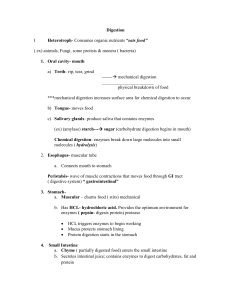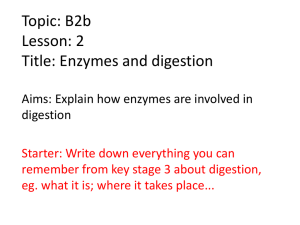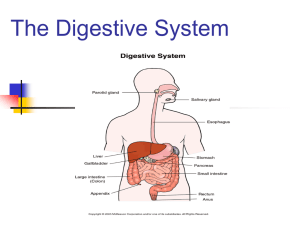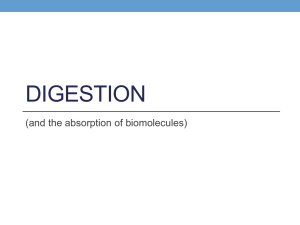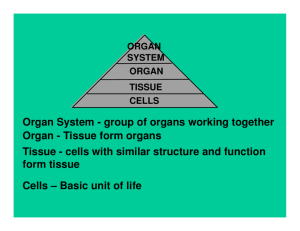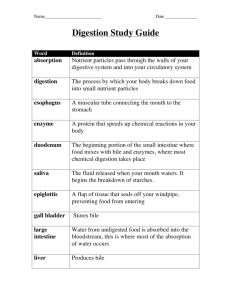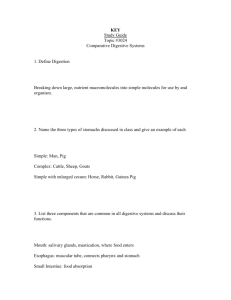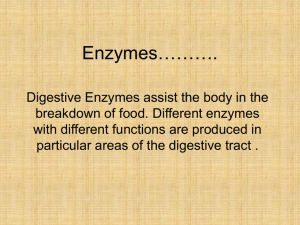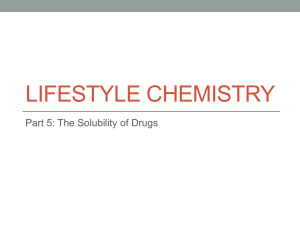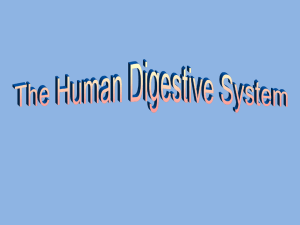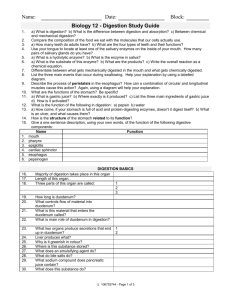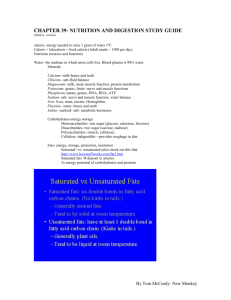The Digestive System Let me break it down for you
advertisement
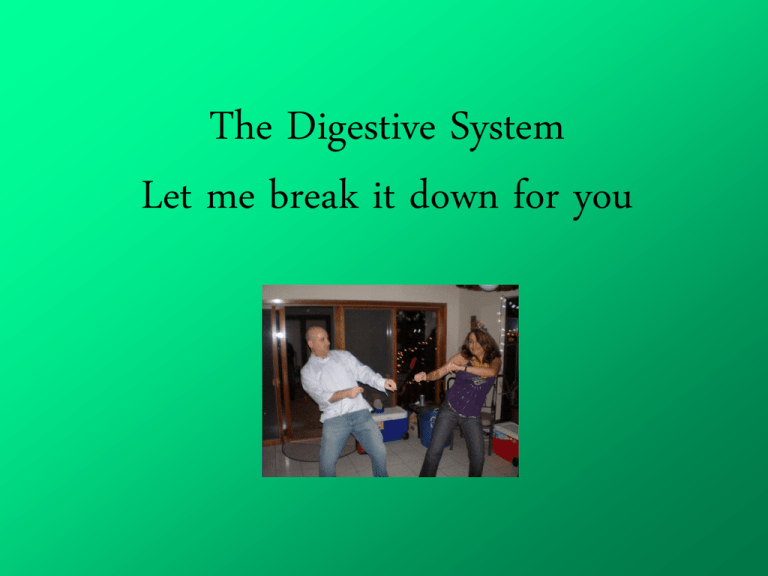
The Digestive System Let me break it down for you Where does the name come from? • It comes from the Latin Root which means to arrange. What is digestion? A chemical reaction which breaks down large food particles into tiny molecules that can be absorbed into the bloodstream. Why does food need to enter the blood? • So it can get to every cell of the body. – Needed to provide every cell with energy. – C6H12O6 + 6O2 --> 6CO2 + 6H2O + energy (from food) The Digestive Tract • Complex creatures have a digestive tract--a tube made up of several organs through which food passes. • General path: Teeth • 4 types of teeth • Incisor- Cuts • Molar- Grinds • Canine- Tears • Premolar- Grinds • Mechanical vs. Chemical Digestion • Mechanical digestion is physically smashing large chunks of food into smaller chunks of food. • Chemical digestion uses chemicals (enzymes) to change the food into different chemicals. (Starch into sugar, for example.) Analogy: – Mechanical digestion is like using a chainsaw to make firewood. – Chemical digestion is like burning the firewood About Enzymes • Enzymes are special protein molecules produced by the body. • They make chemical reactions in the body happen faster (make food break down much faster than it would otherwise). • They are not used up in these reactions - they can be used over and over again. Chemicals in the Digestive System Mouth: • Amylase - enzyme in saliva that begins to break down starch into sugar. Stomach: • Pepsin - enzyme in gastric juices (stomach juices) that begins digesting protein. • Hydrochloric acid - allows pepsin to work more quickly – Common stomach problems: – Heartburn - stomach acid gets up into the esophagus – Ulcer - stomach juices begin to digest the wall of the the stomach - mucus normally helps protect stomach lining Small intestine • • • Most of our food is digested in the first 25 cm or so called the duodenum. – Intestinal juice – produced by cells in the wall of the small intestine contains enzymes that digest carbs, fats, proteins. – Pancreatic juice – produced by the pancreas and squirted into the small contains enzymes that digest carbs, fast, proteins – – • intestine Bile produced by the liver and stored in the gall bladder until needed. NOT an enzyme! It DOES NOT chemically change food - it mechanically breaks up big globs of fat into smaller globs so the enzymes can work on it easier. Absorption • Absorption of most nutrients (carbs, fats, proteins, some vitamins and minerals) happens in the lower portion of the small intestine called the ileum. • Food nutrients diffuse through the wall of the small intestine into the bloodstream. • Nutrients must be dissolved in water for this to take place. – Villi - small, finger-like projections that line the surface of the ileum. • Give a velvety appearance - shag carpet – Villi contain blood vessels and lymph vessels – Blood carries sugars, amino acids, minerals, some vitamins • Lymph carries fatty acids and some vitamins. • The folds of the villi greatly increase the surface area of the small intestine, giving more opportunities for nutrients to be absorbed. Villi Large Intestine – The large intestine (colon) removes excess water from the undigested materials and returns it to the body. – Diarrhea - not enough water is absorbed by the large intestine. • Constipation - too much water is removed or not enough fiber in the person’s diet. • Some bacteria in the colon feed on cellulose (fiber) and produce vitamins the body needs. Anus • Opening below the rectum through which solid waste exits the body


